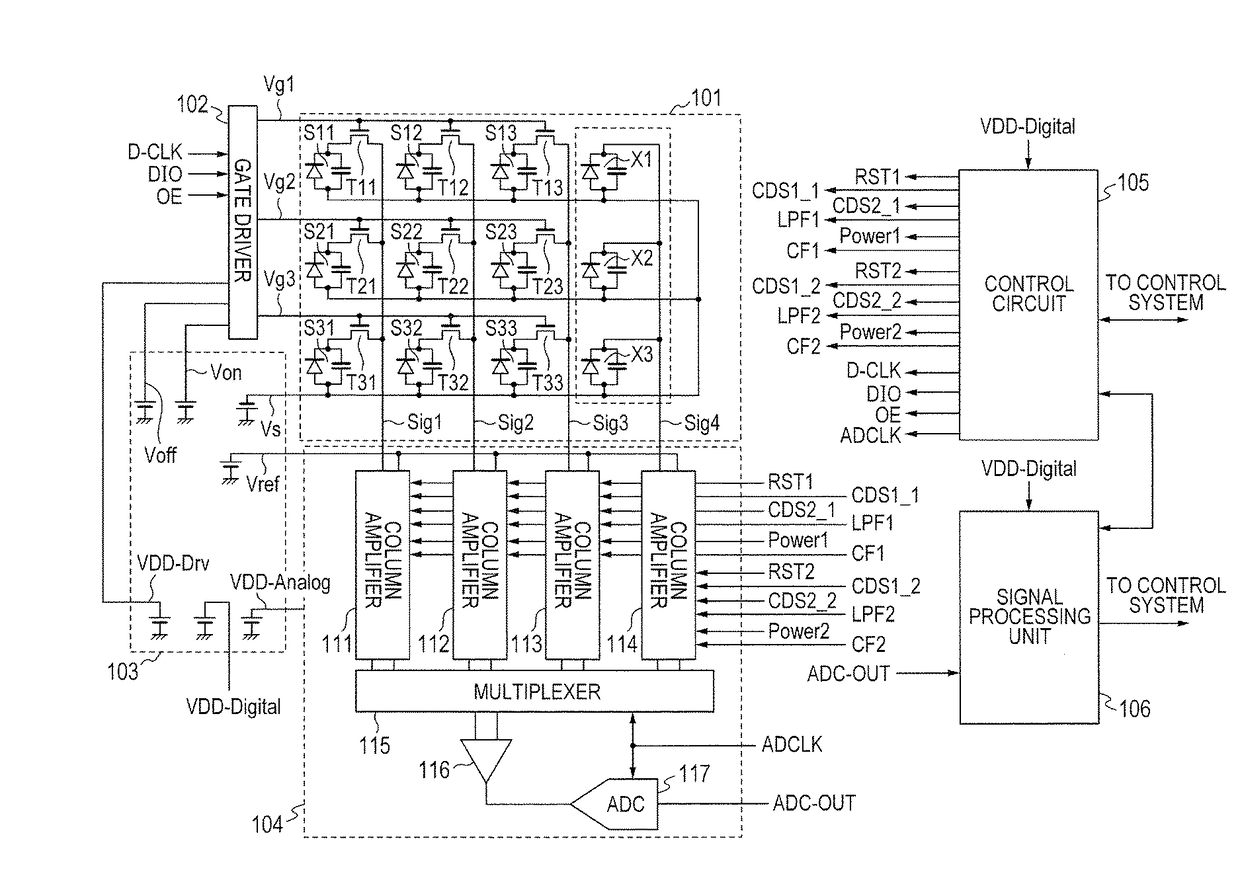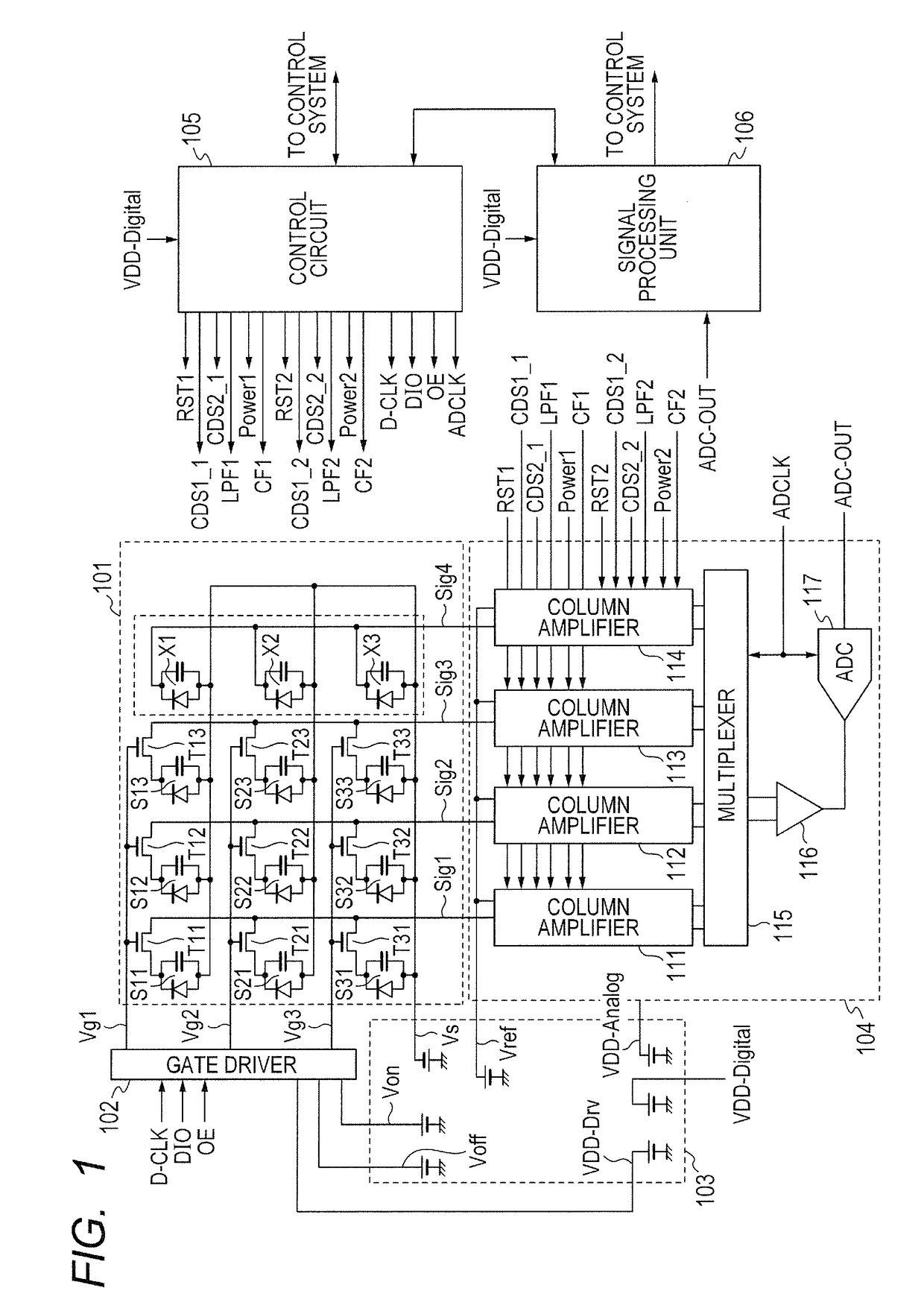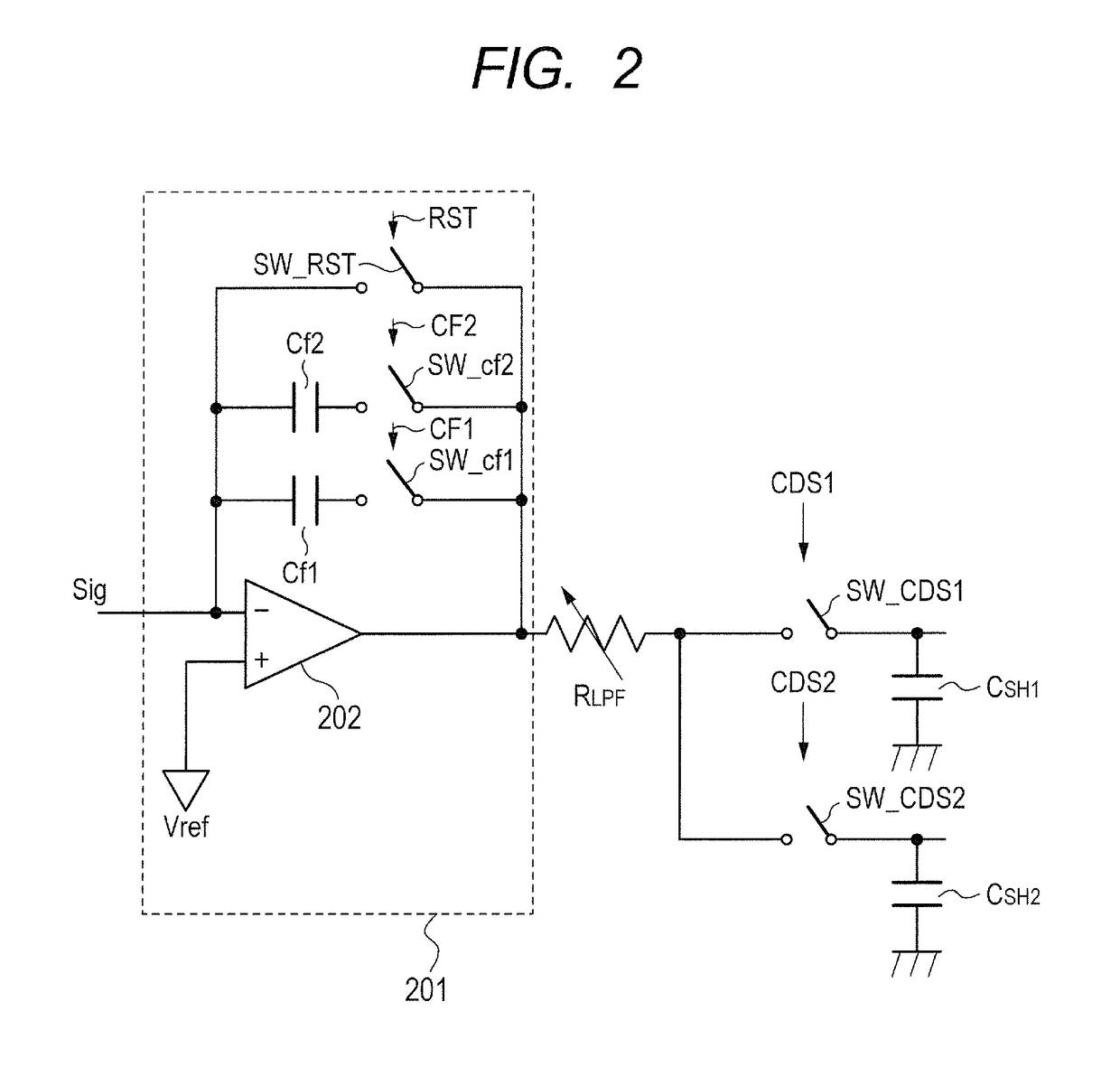Radiation imaging apparatus and radiation imaging system
a radiation imaging and radiation imaging technology, applied in the field of radiation imaging apparatus and radiation imaging system, can solve the problems of unexpected radiation dose, high initial cost, and low detection efficiency, and achieve the effect of reducing power consumption and shortening the time required for radiation detection
- Summary
- Abstract
- Description
- Claims
- Application Information
AI Technical Summary
Benefits of technology
Problems solved by technology
Method used
Image
Examples
first embodiment
[0023]FIG. 1 is a diagram for illustrating a configuration example of a radiation imaging apparatus according to a first embodiment of the present invention. An area sensor 101 includes first conversion elements S11 to S33, second conversion elements X1 to X3, and TFT switches T11 to T33. The first conversion elements S11 to S33 and the TFT switches T11 to T33 are included in a plurality of image pixels for obtaining a radiographic image. The second conversion elements X1 to X3 are included in a plurality of radiation detecting pixels for detecting radiation irradiation in order to monitor the radiation irradiation amount, or the like. The conversion elements S11 to S33 and X1 to X3 are arranged so as to together form a matrix pattern. The conversion elements S11 to S33 and X1 to X3 convert a radiation ray (for example, X-ray) into electric charge. For instance, the conversion elements S11 to S33 and X1 to X3 each include a wavelength conversion member, which is made of GOS or CsI a...
second embodiment
[0062]FIG. 5 is a diagram for illustrating a configuration example of a radiation imaging system according to a second embodiment of the present invention. The radiation imaging system of this embodiment includes, in addition to the radiation imaging apparatus 501 of the first embodiment, a wireless communication unit 504, the control system 505, and the radiation generating apparatus 509. The radiation imaging apparatus 501 includes the area sensor 101, the gate driver 102, the power circuit 103, the readout circuit 104, the control circuit 105, and the signal processing unit 106 as in FIG. 1, and further includes a battery 502 and a wireless communication unit 503. The battery 502 supplies a supply voltage to the power circuit 103. The control circuit 105 and the signal processing unit 106 hold communication to and from the wireless communication unit 504 via the wireless communication unit 503.
[0063]The control system 505 includes a computer 506, a wireless communication device 5...
third embodiment
[0066]FIG. 6 is a diagram for illustrating a configuration example of a radiation imaging apparatus according to a third embodiment of the present invention. This embodiment (FIG. 6) is obtained by adding a switching unit 601 and a timing generator 602 to the first embodiment (FIG. 1). Differences of this embodiment from the first embodiment are described below.
[0067]The second conversion element X1 of the radiation detecting pixels is connected to the column amplifier 111 via the signal line Sig1. The first conversion elements S21 and S31 of the image pixels are connected to the column amplifier 112 via the signal line Sig2. The first conversion elements S12, S22, and S32 of the image pixels are connected to the column amplifier 113 via the signal line Sig3. The first conversion elements S13, S23, and S33 of the image pixels are connected to the column amplifier 114 via the signal line Sig4.
[0068]The switching unit 601 supplies the column amplifiers 111 to 114 with the control sign...
PUM
 Login to View More
Login to View More Abstract
Description
Claims
Application Information
 Login to View More
Login to View More - R&D
- Intellectual Property
- Life Sciences
- Materials
- Tech Scout
- Unparalleled Data Quality
- Higher Quality Content
- 60% Fewer Hallucinations
Browse by: Latest US Patents, China's latest patents, Technical Efficacy Thesaurus, Application Domain, Technology Topic, Popular Technical Reports.
© 2025 PatSnap. All rights reserved.Legal|Privacy policy|Modern Slavery Act Transparency Statement|Sitemap|About US| Contact US: help@patsnap.com



